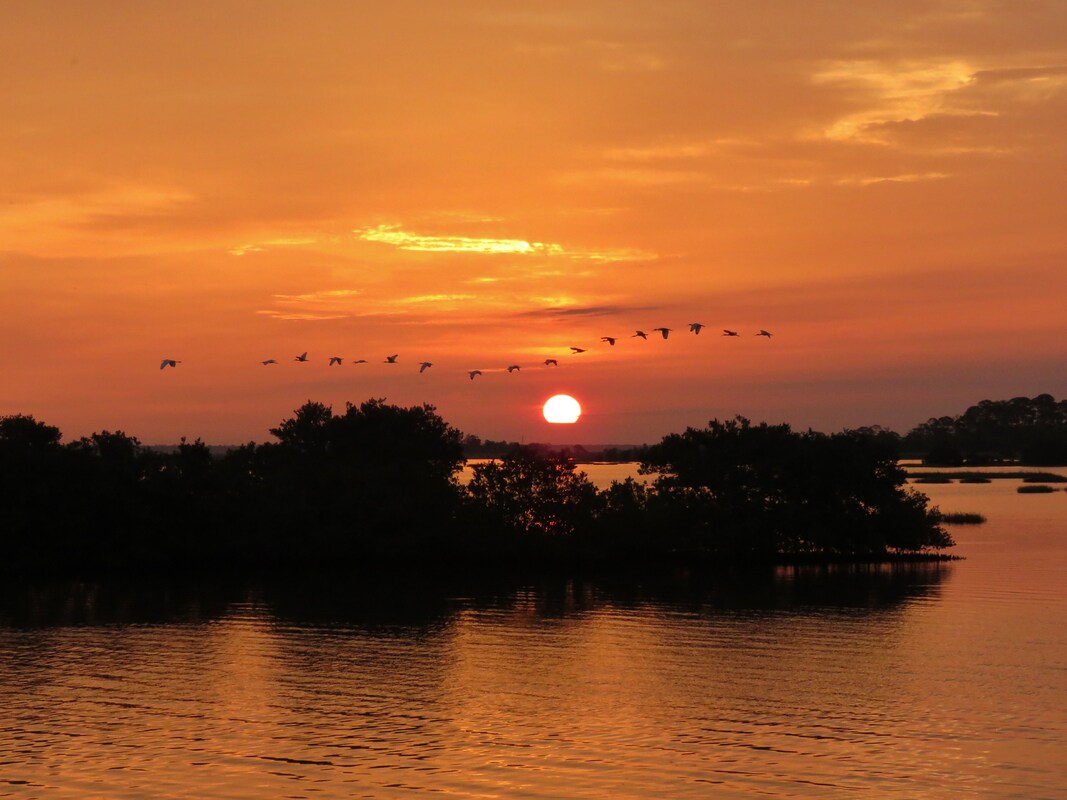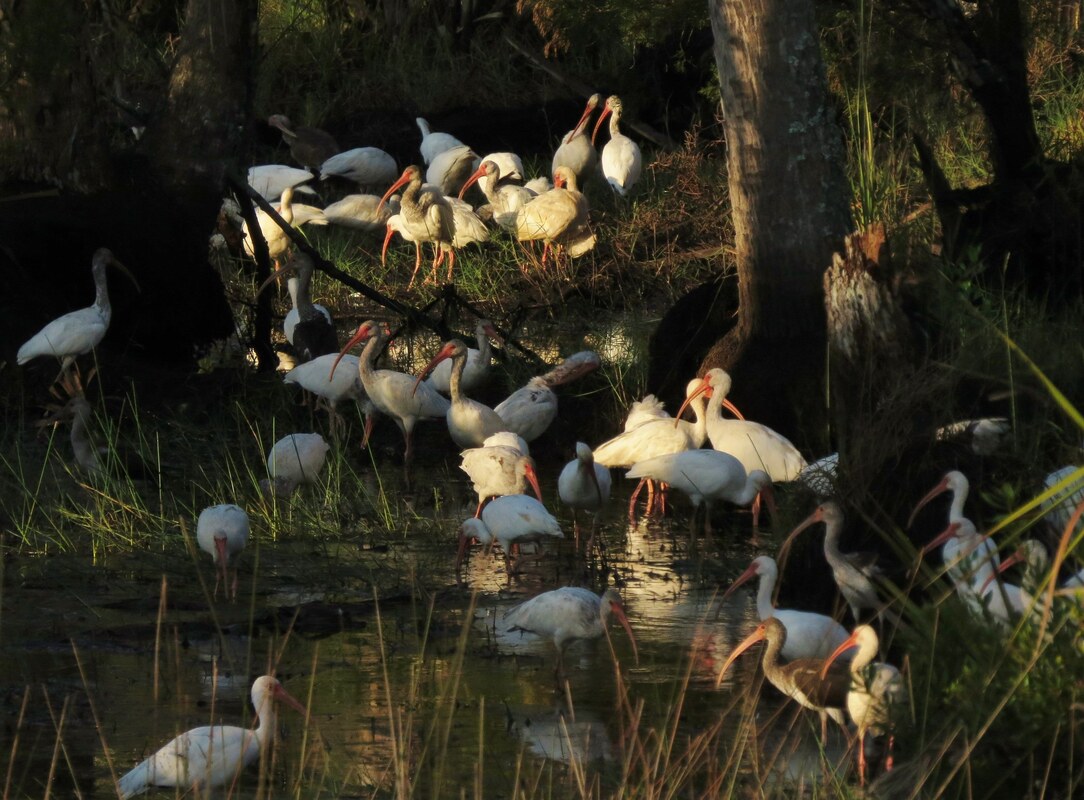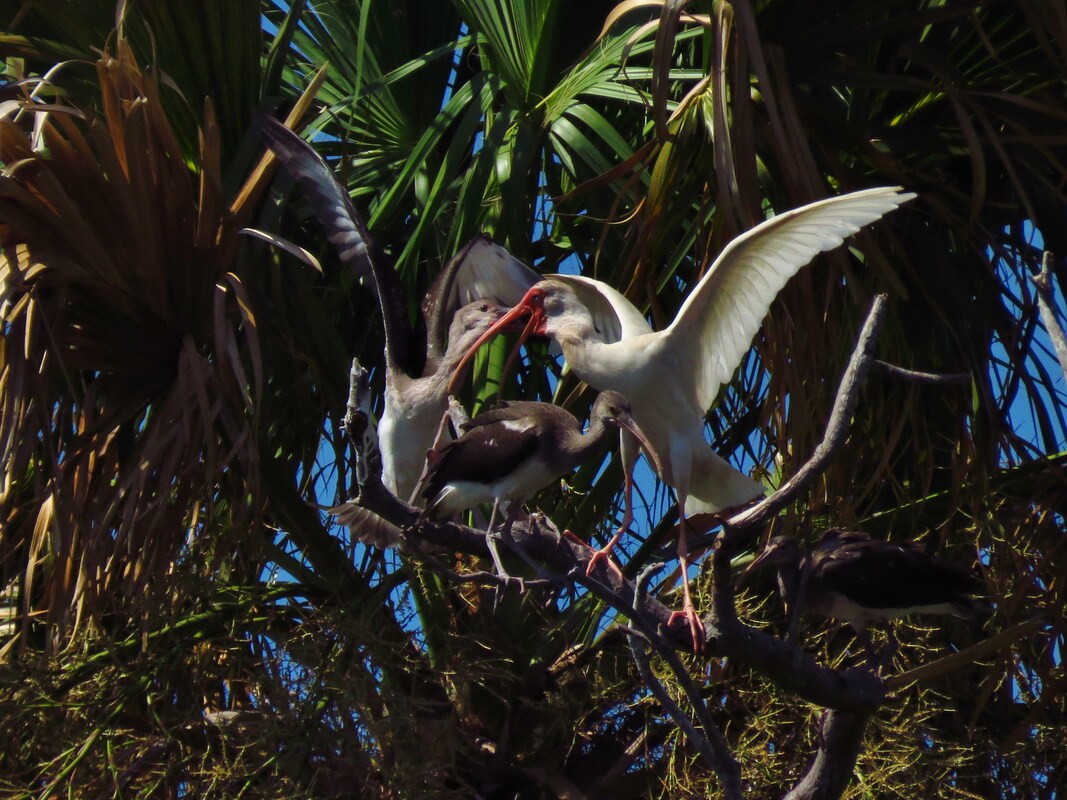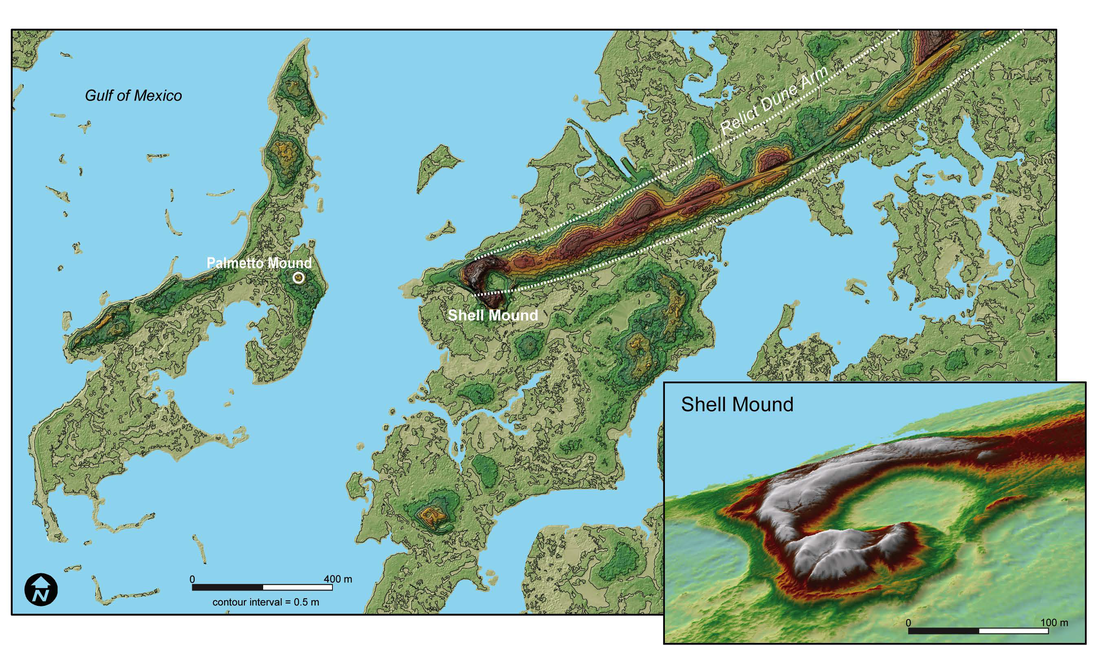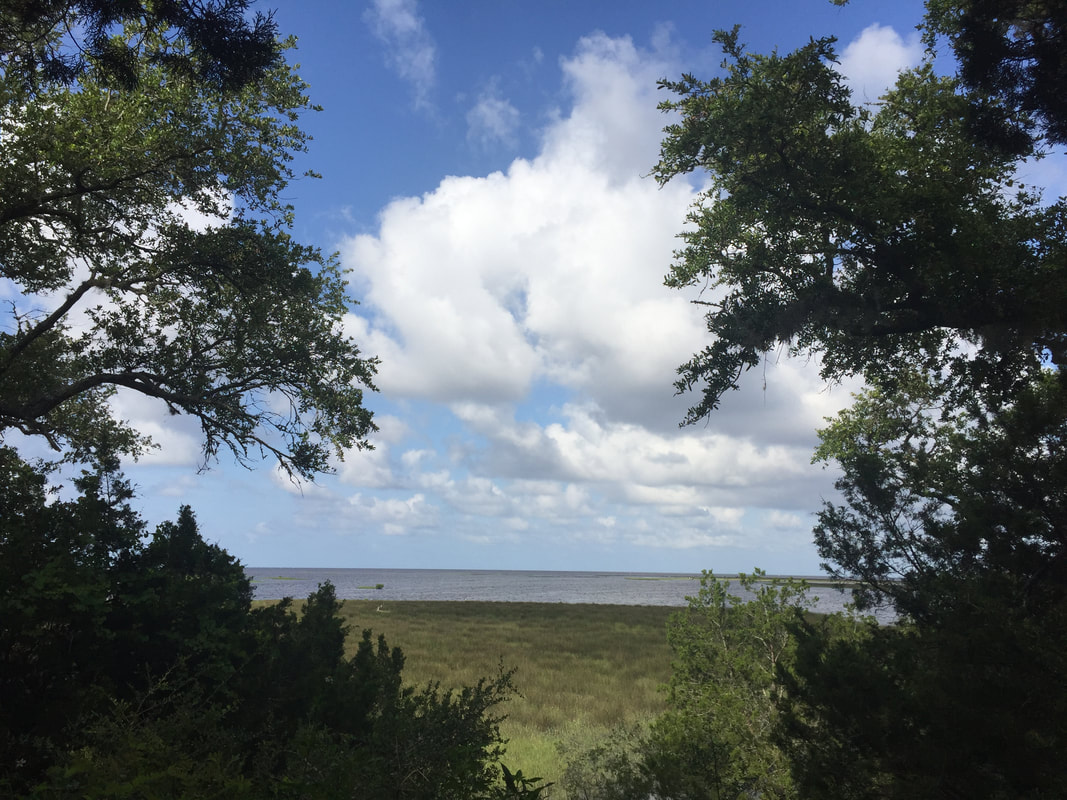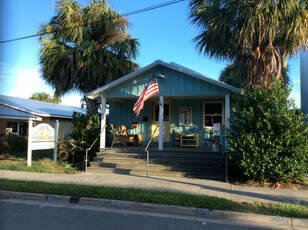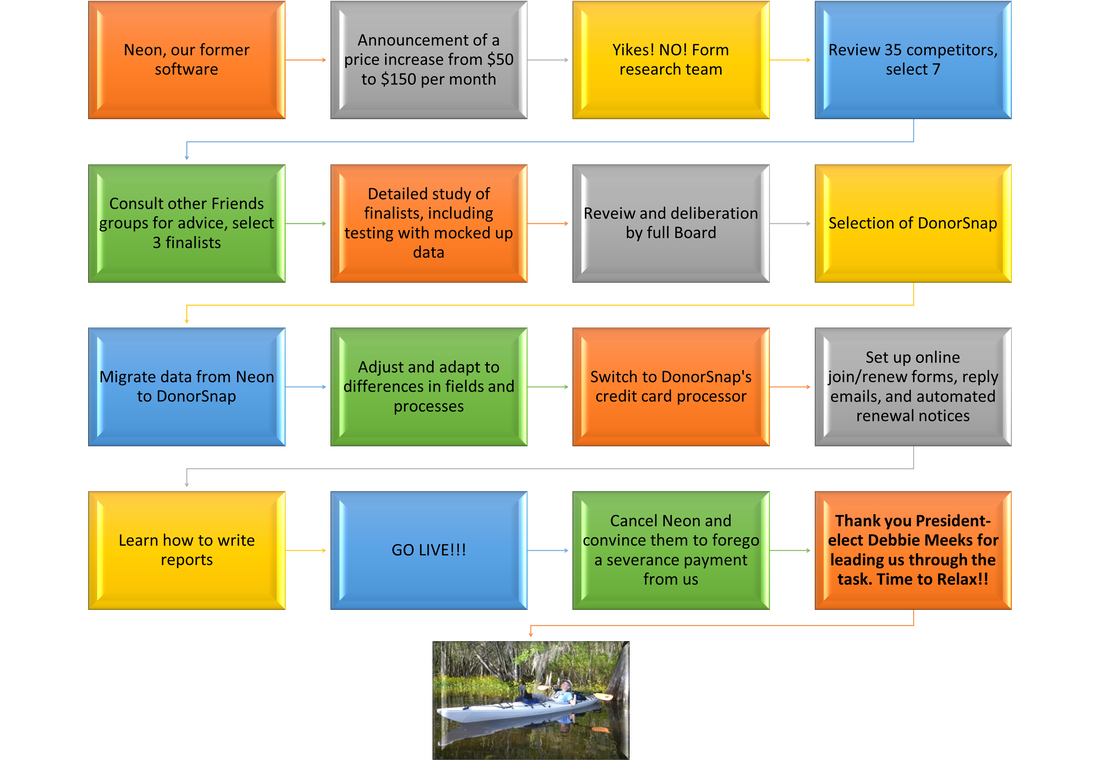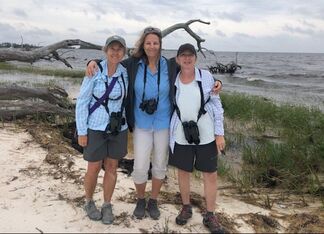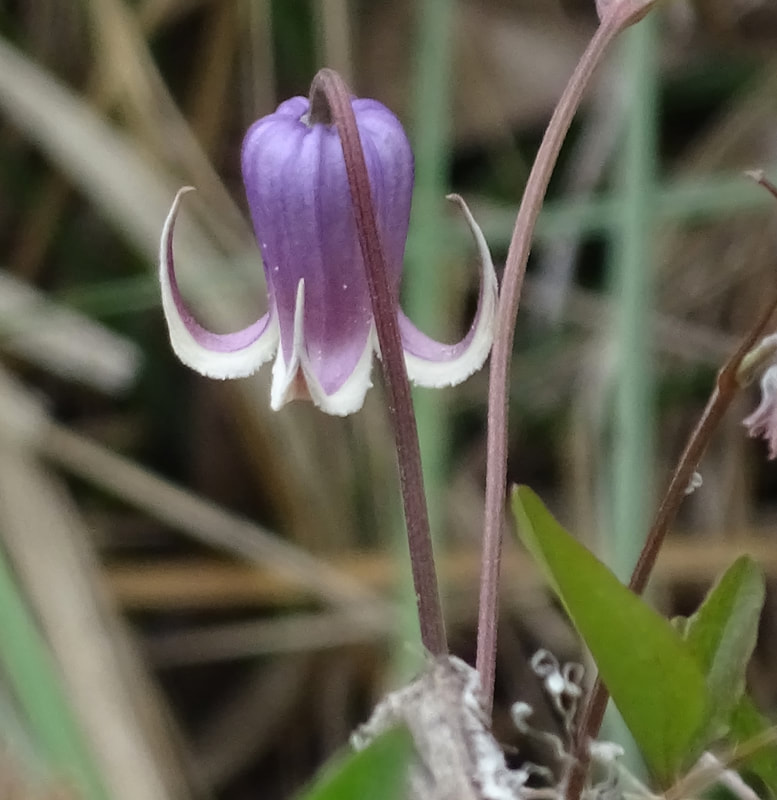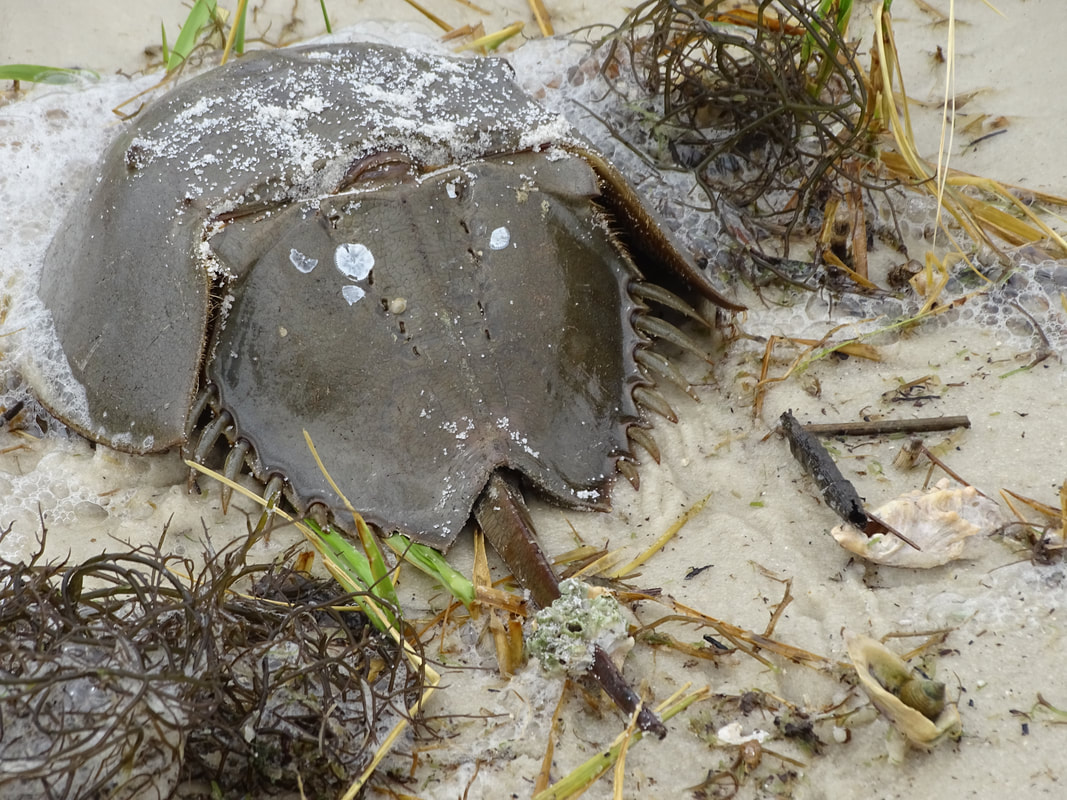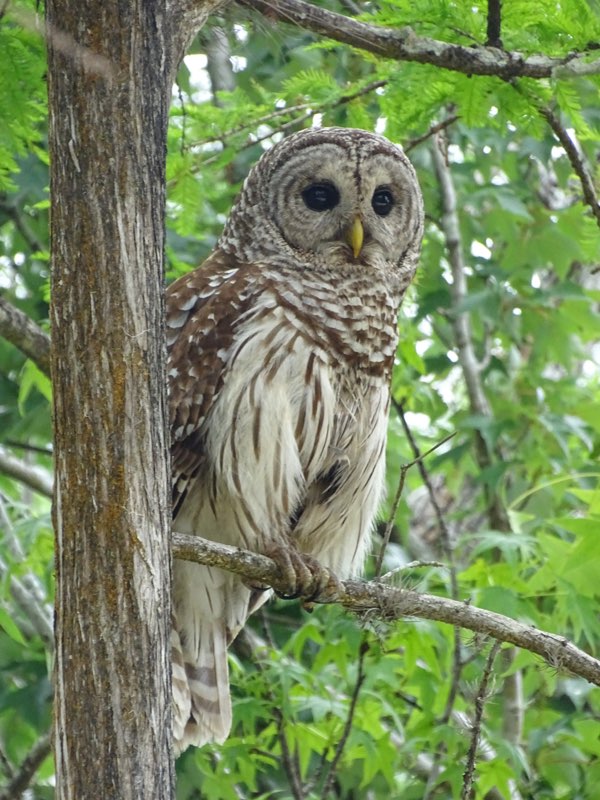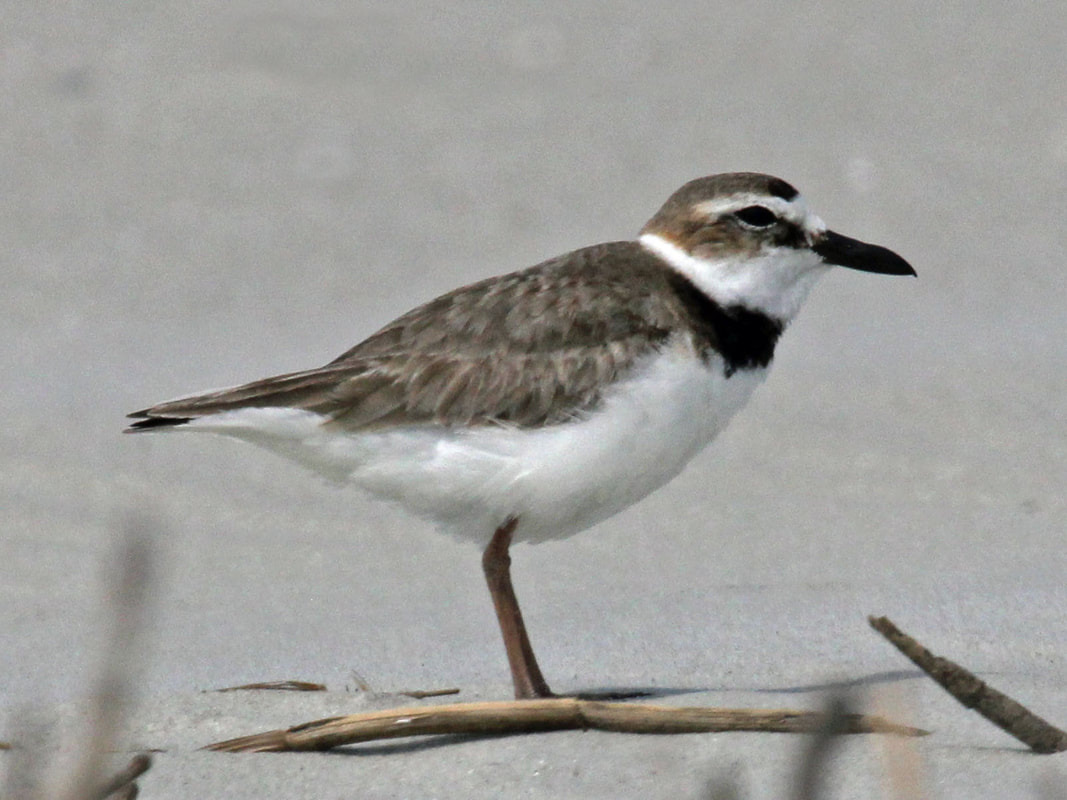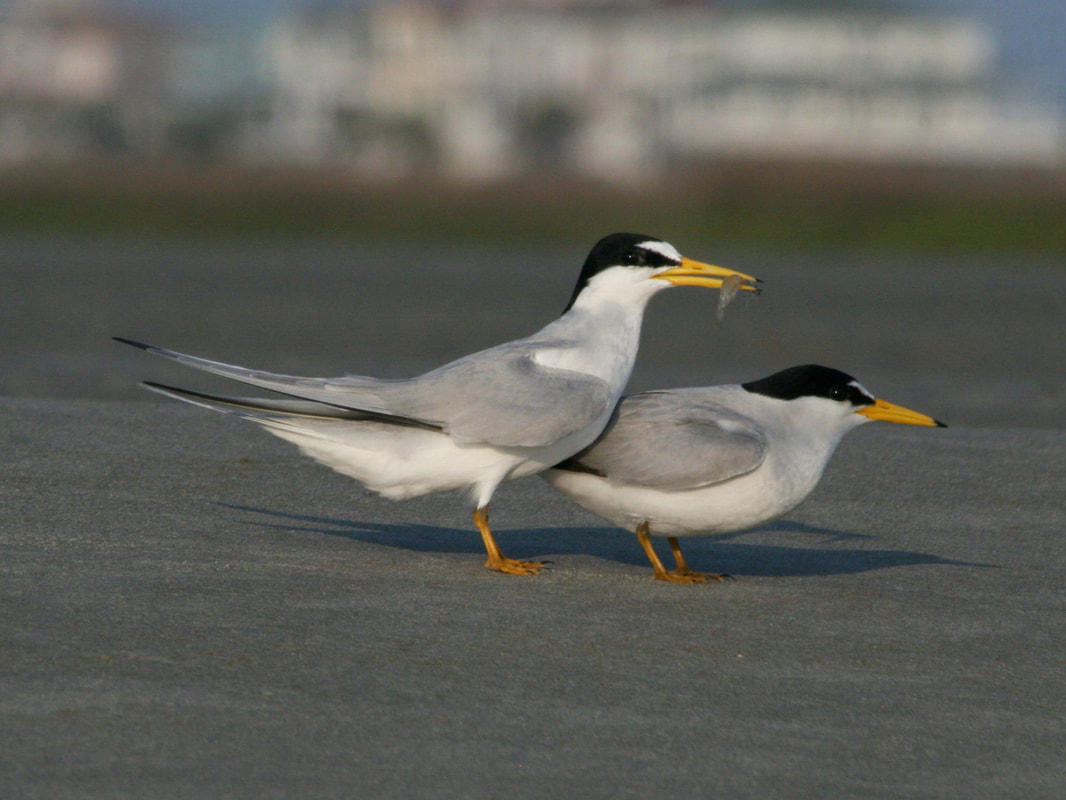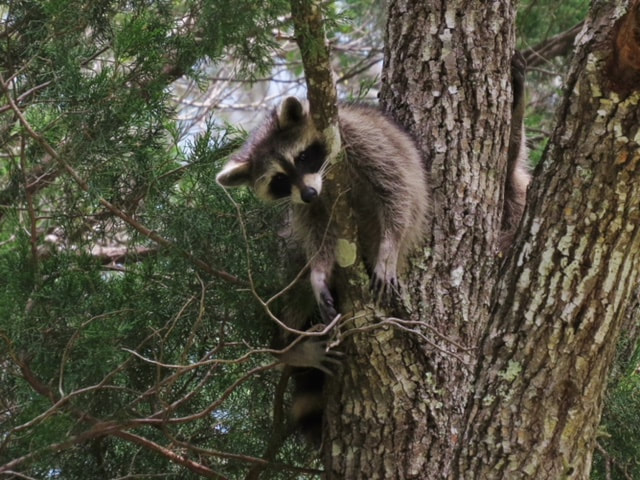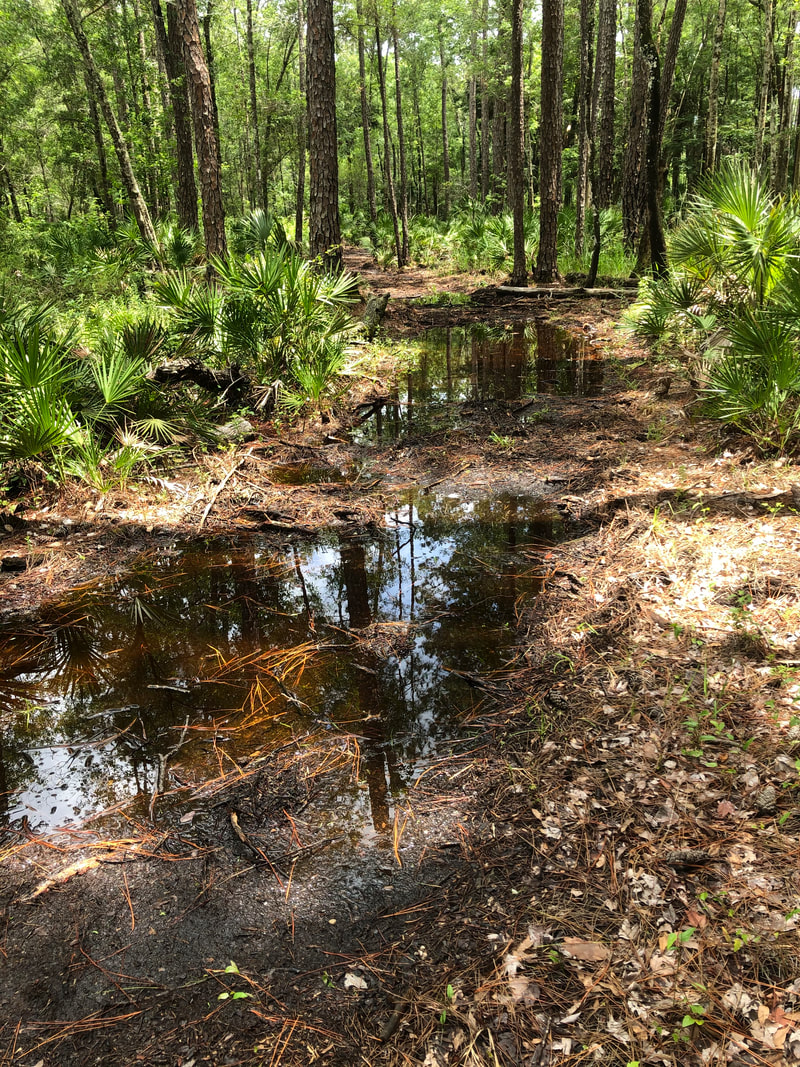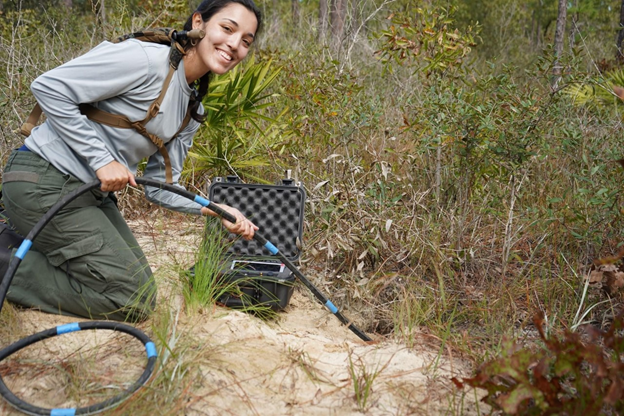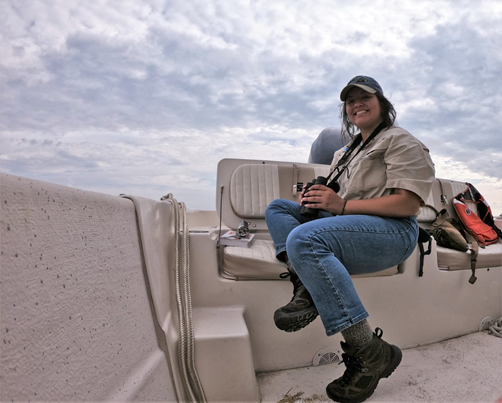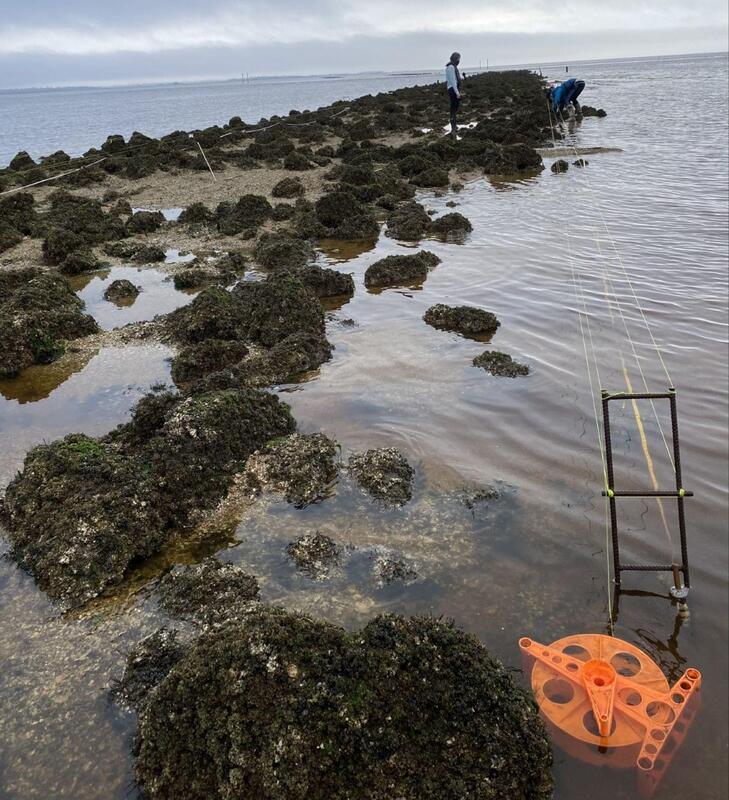|
Watching the ibises fly over Cedar Key this week and knowing that they were foraging for food for their nestlings, Friends members Mac and Nita Cox wondered where they would find enough freshwater fish for all the baby birds during this dry season. Juvenile ibises can't take the saltiness of fish from the Gulf. The adults need to fly in to fresh water areas, find food, and carry it back to the nesting areas on Snake Key in the Cedar Keys National Wildlife Refuge. We asked Deputy Manager Larry Woodward about it and learned that finding enough food for nestlings is a full-time job for adult ibises. They fly far, multiple times a day, to forage and bring back fish for their young.
0 Comments
People have gathered at Shell Mound for more than 1500 years to celebrate the summer solstice. Come and join Friends of Lower Suwannee and Cedar Keys NWRs and the Florida Public Archaeology Network for this year's gathering. Learn about the place where Shell Mound was built centuries ago . . . a huge, wind-formed dune aligned with the solstices. When: Sunday, June 20th, 9:00 to noon Where: On CR 326, three miles off CR 347, on the Lower Suwannee National Wildlife Refuge, near Cedar Key The Schedule:
What to Bring: sunscreen, water, shoes for a trail walk, hat and clothes for protection from insects, bug spray To learn more about the natural and cultural history of the Shell Mound site before coming, you may want to look over the interpretive panels or read the short guide book, Shell Mound: A Portal into Another World, on our Shell Mound website page.
Thanks to the pandemic, the Friends Welcome Desk at Refuge Headquarters has been closed, and it is unlikely that it will be available anytime soon. Space is at a premium at the Refuge and the space that was designated for Friends, is now occupied by USFWS employees.
Coincidentally, the Cedar Key Chamber reached out requesting more information on Refuge activities. Peg Hall and Denise Feiber met with Sue Colson to discuss a trial run of setting up a Friends table at the Chamber Welcome Center. On two days (one Saturday and one Wednesday) in May, Peg and Denise set up displays and brochures at the Chamber from 10 a.m. to 2 p.m. During the short time, approximately 40 people stopped by for an education in the many activities offered, particularly those in the Lower Suwannee NWR. Visitors to Cedar Key are often unaware of these areas. Based on the results of these trial runs, the Friends Board supports moving forward with an extended trial period for the following dates: June 12, 19, 26, and July 3. Time period between 10-2 seems to work well. We need more volunteers to help cover these dates. Can we count on you? If so, please reply to [email protected]. Friends has many trail guides available for folks who want to walk, bike, and paddle on the refuge. You can access all of them on the website Maps page. And yet, one of the features that all visitors remember about coming to the Lower Suwannee or Cedar Keys Refuge and trying to walk or bike in warmer months is our biting insects! Friends board member Dan Kline is a biting insect researcher. He is working on a trail guide for a virtual trail . . . one you can enjoy and learn from without having to actually go out and walk or bike it. Here is a preview of some of his video that will help describe and explain the habitat that yellow flies most enjoy . . . and thus humans might want to avoid in warm months. A note from board member Debbie Jordan: We’ve had another delightful spring weather-wise. Time to get out and enjoy the Refuge! Roy and I had a chance to show two birdwatcher friends from Colorado a little piece of our heaven last month. I think the wildness of the area really blew them away, so unlike the rest of Florida further south. We drove the mainline and walked the beach at Shired Island, where we ran into Kathy Dusterwinkle, one of our wonderful Refuge volunteers from Michigan as she was picking up trash on the beach. Those volunteers really work hard. Here’s a few photos from our expedition. We ran across a few intriguing plants. The Leather flower grows on a vine and the flower is curiously stiff.
A few horseshoe crabs were on the beach, these fascinating creatures are older than dinosaurs! Since this Barred Owl did not fly off, we assumed it had a nest nearby. Quickly admiring the beautiful markings, we snapped a couple of pictures and got out of there. I am sure our friends will be back! We are in the “biblical proportions of bloodsucking, biting, and insanity-causing insect season”. Forester Daniel Barrand is mulching with the Tiger Cat in Dixie County. The video shows the horrendous swarms of biting yellow flies in the Week's Landing area where he is working. This is the definition of insanity if you are outside. Daniel, along with our new staff members Jasmin Muslimani (Refuge BioTech) and Nicolle Montero (UF Summer Forestry Assistant), attended Leah Eggeman's timber sale prebid meeting at St. Marks. Daniel said that this is the most complex timber sale he has put together to date while with the NWRS. Jasmin and Nicolle Montero are also working to continue our Bobwhite Quail surveys. Last week, while Nicolle and Jasmin were doing photo plot work, they got into a terroristic horde of ticks that were literally crawling all over them. They had to return to the shop to de-tick and change clothes. Refuge Engineering Equipment Operators Jason Coates and George Pelt have been doing road improvement work around the refuge. Also, Jason recently repaired several large potholes at McCormick Creek Road boat launch. The 2021 - 2022 Lower Suwannee Hunt Brochure is off to the printers and already available here on Friends website. We offer 201 aggregate hunt days, 131 aggregate hunt days minus waterfowl, or 99 total hunt days. Our phones are already getting calls about this upcoming season's hunts. Least Terns and Wilson’s Plovers have established a shorebird nesting colony! Florida Fish and Wildlife Conservation Commission (FWC) staff are surveying the areas. Refuge staff are working to protect these nesting birds by attempting to lure and trap raccoons. So far no raccoons have been trapped despite a variety of baits being used. They are apparently very smart and savvy.
The Florida Fish and Wildlife Commission's Aquatic Habitat Restoration and Enhancement Program generously provided the Refuge with a purchase of 1000 tons of lime rock and 600 tons of gravel for our hydrologic restoration project’s low water crossing improvements. Engineering Equipment Operators George Pelt and Jason Coates are coordinating the delivery and staging of this material.
Yes, this will cause some unsightly impacts to select areas. Once the lime rock and gravel have become part of that landscape it will look far less stark. Any aesthetic concerns can be directed to Andrew. (HE WILL SET UP A COMPLAINT BOX BEHIND THE DUMPSTER…) Staff members from the engineering firm Wood PLC continue to survey our Refuge roads and collate their information with Suwannee River Water Management District rainfall data to determine the options available to improve and restore the natural sheet flow of water across the Refuge. The Suwannee River Water Management District received the funds through the Florida Technical Implementation Group’s (originally Gulf Oil Spill monies that went to the State of Florida) USFWS grant funds for the engineering and design portion of the hydrologic restoration project on the Refuge. We anticipate beginning to analyze the draft restoration options this summer. Our work for these particular grant monies will focus on the Refuge’s public driving roads, not the grass secondary roads.
Jasmin Muslimani is a Biological Science Aid at the Lower Suwannee National Wildlife Refuge, where she assists in conserving and managing wildlife. She is an undergraduate student at the University of Florida and is pursuing a degree in Wildlife Ecology and Conservation with a minor in Agricultural Communications. Before her time at UF, she was an Orthopedic Technician in the U.S Army and was stationed in Hawaii. As an enthused future Wildlife Biologist, she is looking to apply her knowledge, skills, and abilities to further understand and pursue a future career opportunities within a federal agency. In her free time, she stays active outdoors and likes to rock climb, cycle, hike, and enjoys primitive camping. She is excited about being part of the team at the refuge! Nicolle Montero is a summer 2021 Nature Coast Biological Station and Lower Suwannee NWR Forestry Assistant. She was born in Long Branch, NJ, and grew up in Orlando, FL. She is a recent University of Florida graduate having majored in Natural Resource Conservation with a focus on ecology. Nicolle is interested in pursuing a graduate degree but would like to explore different career opportunities to better understand her professional passion. Camping, traveling, hiking, kayaking, and playing volleyball are here favorite activities and Nicolle loves working in the outdoors and learning as much as she can from different people.
Brad Ennis runs the airboat over the low-tide mudflats and between the barrier islands protecting the Lower Suwannee National Wildlife Refuge. A fat raccoon traipses among clumps of cordgrass. Fog limits Gulf of Mexico visibility to 100 yards.
“It’s been worse,” Ennis says. It’s supposed to lift by 10 a.m., three hours away. By then peak low tide will have come and gone and Ennis, with his band of University of Florida researchers, will have completed a morning’s work counting oysters on Lone Cabbage Reef.... ..."We’re at a tipping point,” says Peter Frederick, a newly retired research professor at the university who cofounded the restoration project a decade ago with colleagues Bill Pine and Leslie Sturmer. “We have fished out not just the oysters, but their essential substrate that supports them too. We’re replenishing both now. Ultimately, the solution is to get more freshwater. But there are many competing demands for that water.” |
Archives
June 2024
|

Friends of the Lower Suwannee & Cedar Keys National Wildlife Refuges
P. O. Box 532 Cedar Key, FL 32625 [email protected] We are a 501(c)(3) nonprofit organization. |
|
